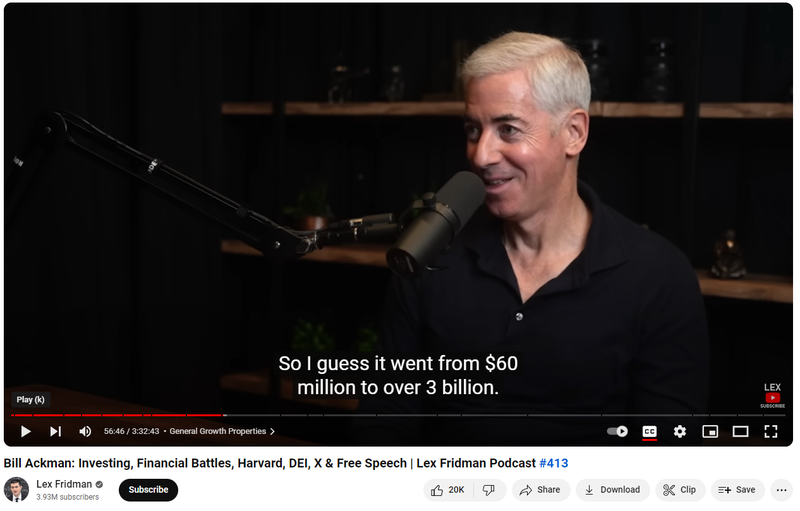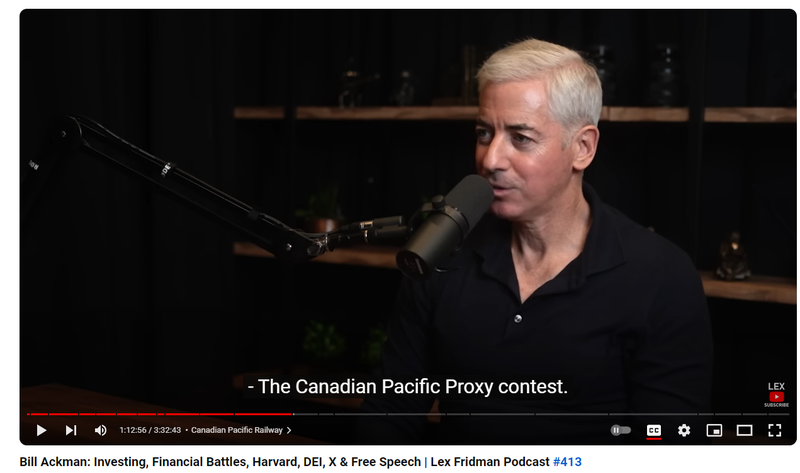What Happened?
Published 27-APR-2024 11:19 A.M.
|
16 minute read
What’s the best way to get a “bargain” priced entry point into a later stage company with real, valuable assets?
Answer:
In or after a “recapitalisation round”.
What is a “recapitalisation round”?
It’s when an advanced stage company with quality, valuable assets hits a string of bad luck and needs to raise money at a very low share price in order to emerge stronger.
More on that in a second...
We are launching our new “Emerge” Portfolio where we will focus on finding companies with high quality assets (in our opinion), that have recently been recapitalised and are trading at what we believe to be low valuations relative to underlying asset value.
Usually we talk a lot about finding good entry points into early stage resource exploration companies.
This is a bit different.
Early stage exploration is based on blue sky possibilities and drilling “luck” to create value.
But what about good entry points into later stage companies?
Companies which ALREADY have genuine, proven assets or businesses.
Think of biotechs with existing intellectual property, a tech company with a product in market and revenue that’s trying to grow, or advanced stage resource development companies.
Companies that have already had many years of work and investment put into their current projects/business.
...but are trading at brutally low share prices and had been struggling to attract new capital.
Why?
Sometimes a run of bad luck out of the companies control, or past management mistakes, too much debt, or just plain old shareholder exhaustion from missed timelines.
Which makes the share price drop even more.
Then at or around its share price “all time lows” we might see a “recapitalisation raises” occur.
We define it as a sometimes drastic reorganisation of the capital structure (and potentially also board and management) of a business to put the company on a better financial footing to execute a business plan.
But importantly, with the same fundamentally valuable assets.
Long suffering, existing shareholders hate them.
Incoming new shareholders love them (when they come off).
(“incoming new shareholders” like we are aiming to be in our “Emerge Portfolio”)
We have been on both sides of the table.
Our new Emerge Portfolio will actively seek ASX companies with truly valuable businesses or projects that have fallen on hard times but have recently been restructured with a clean slate, a strong balance sheet, and the right management team to move forward.
And importantly the relevant macro theme sentiment moving in the right direction for them...
At which point we believe that the market should start to reflect the value of the underlying business/assets in the near term.
After 18 months of terrible small cap market conditions, where raising money has been hard, we are starting to see a few companies with quality assets/businesses forced into “recapitalisation raises”.
Here is an example of how it might happen and why recap raisings are terrible for existing holders (unless they participate) but can be incredible for new investors.
Have you ever been invested in a stock for many, many years...
It’s got an established business that it's trying to grow.
Or a valuable project it’s trying to develop or commercialise.
You keep waiting and waiting, wondering why the share price doesn’t reflect the value of the assets.
You probably invest in every placement and rights issue that comes along too.
(it's certainly happened to us a few times)
Then there is a run of bad luck for the company...
The macro sentiment turns against the company, it’s harder to raise money.
This can be made worse if the board is divided on how to run the company (internal politics).
Pressure builds up.
Then a couple of badly timed management decisions happen.
Promised timelines are missed...
Then missed again.
Shareholders lose patience and start selling, the share price suffers.
(but the assets are still valuable)
Capital markets aren’t keen to put more money in...
Debt is taken on to try and “wait out” the bad patch till markets improve.
Timelines are missed yet again.
(but the assets are still valuable)
More shareholders sell, the share price keeps going down...
The debt stays the same.
The share price is destroyed, the company is broke and now in debt.
(but the assets are still valuable)
Most existing shareholders are tapped out (financially and emotionally) and don’t want to put in any more money.
...even if offered at deeply discounted deal terms.
This is about the time a “recapitalisation” raise needs to happen.
New external investors will need to be encouraged to come in, fresh legs, with fresh cash, who can still see the value of the business/project without being clouded by years of emotional baggage and accumulated financial losses.
But the cap raise terms need to be very attractive, especially if part of the money raised is going straight out the door to pay down existing debt.
(new investors don’t like investing to pay off old debt).
Usually this means that existing holders get “crunched” and new incoming investors take a huge stake in the company for a low price.
Existing shareholders will usually get first offer to participate in the recap raise - however many are too jaded, fatigued, disengaged and have lost too much money with the company to stump up anymore cash.
Recap raises can be terrible for long suffering shareholders if they don’t participate, but can be an incredible entry point for new incoming investors.
(like we will try to be with in our new Emerge Portfolio)
A recap raise is usually done at a massive discount, the cash is used to pay down any debts, and shore up the balance sheet for the turnaround phase.
If past management was to blame for the performance, recaps sometimes come with conditions of a new board and management team being installed.
Sometimes it was genuine bad luck and factors outside management’s control, so the management stays to turn things around as macro factors improve.
A recap raise gives the company a clean slate, fresh new shareholder base and a chance to progress the valuable assets it owns.
This emergence can be highly rewarding for new investors that come in at around the recapitalisation share price.
Especially if timed with a sentiment swing towards the marco theme in which the company operates, or a return to general positive market conditions.
(but is not without risks, which we will outline shortly)
Which is what we will try to achieve in our new Emerge Portfolio.
And we will be announcing an addition to this new Portfolio soon.
Introducing: Emerge Portfolio
Positions in undervalued companies with advanced, high quality assets that have been recently recapitalised.
Time Frame: 3 to 5 years
Here is the checklist of what we are looking for:
- Real, later stage company with a with genuinely valuable asset/business
- Company had fallen on hard times, bad luck that was not within its control
- OR previously ineffective board/ management team has been replaced
- Currently or recently recapitalised, fresh cap structure and clean balance sheet to execute business plan
- Sentiment swinging towards the macro theme in which the company operates
- Another chance to execute business with fresh, new investors base
Potential rewards:
- Great entry price can leverage returns.
- Clean slate, new management, chance to right past mistakes
- Valuable asset has a fundamental value which the market doesn’t appreciate
- Sold down by fatigued, disengaged, long term shareholders
- Potential for material re-rates on a turnaround
- Good entry point in or shortly after recapitalisation raise
Like any Investment we make, there are always risks that may materialise that we have identified and accepted, even though recap raises sound attractive, there are things that can still go wrong:
Risks of Investing in recapped companies
- Companies may still miss timelines in the new execution plan
- Weakness in relevant macro conditions may continue against the company for longer than expected
- Existing OR new board and management, they may not be able to execute the business plan in the expected time frames, or even at all
- General risks that can happen to most small cap companies remain present, just because a company is recapitalised and has another chance to deliver shareholder value, doesn’t mean they are immune from the standard set of small cap risks.
- A “down round” - if any of the above happen, it may lead to a capital raise at an even lower price than the recapitalisation raise.
Having noted the potential rewards AND the risks, we are looking forward to adding a new Position into our Emerge Portfolio soon.
We were inspired to start this new Portfolio after seeing a few recapitalisation raises coming across our desk in the last few months:
Some recapitalisation term sheets we have seen over the last few months include:
- A precious metals company with a large JORC resource that used to trade at over $110M market cap, recapping at ~$6M.
- A life sciences company, with advanced intellectual property that used to trade at $40M, recapping at sub $10M with the same assets but a new board and management team.
- A gold company with a 300,000+ ounce gold resource that traded as high as $145M now recapping at sub $10M.
- An FMCG drinks company with ~$5M revenue recapped at a sub $1M enterprise valuation
- A medical device company with an advanced technology that took 10+ years to develop, on the cusp of commercialisation, that recapitalised at ~$5M market cap (its risen 4x in the last few months since the recap)
The prolonged, tough market conditions are throwing up more of these opportunities, and we plan to add a few to our new Emerge Portfolio while the tough market conditions continue.
And hopefully they re-rate as we eventually enter normal market conditions.
We were also inspired after listening to a long interview with one of the world’s most famous and successful investors, Bill Ackman.
Here is a part of the interview where Bill Ackman talks about a 50 bagger from investing in a property company that had taken too much debt before the GFC and the share price had been smashed, but he believed there was still a lot of value in the underlying assets, and it turned around - Watch it here

- Likely one of the best hedge fund trades of all time. $60M to $3BN a 50X investment
- Initially the company fell from $63 a share to 34c, market cap went from $20BN to $100M as it took on too much debt too quickly just before the global financial crisis hit,
- Ackman said, “I thought the assets were far more valuable than liabilities” in other words this was a real company with real value, it just had ONE big problem and it was the crippling debt burden and the prospect of bankruptcy.
- He looked at fundamental drivers, occupancy and cashflow.
- He started buying on market when its share price was destroyed by negative sentiment, fear and lack of market faith in the company's assets.
- Put the work into a restructure while on the board and exited once the company was fixed up
Here is another story from Bill of identifying a poorly run company with strong underlying assets (railroads) and fixing it up over time - watch it here:

Here’s a quick summary of what Bill Ackman is talking about in this clip:
- Big turnaround story from the Canadian railroad industry - poor historical management, poor financial performance and a board fight ensues...
- Ackman’s company acquires 12% of shares and agitates for change
- Then an ugly fight over direction of company ensues
- Ackman won the fight and returned 10x on a “boring railroad company”
- This is why management is so important - and companies that go through big personnel changes can produce the biggest returns if the people are right.
While these are much bigger companies than we usually would look at, and we are certainly no Bill Ackman, and don’t take an “activist investor” approach, we have had our own success with a company that we identified was trading well below its underlying asset value.
Whilst not a strict recap round, perhaps our greatest success in picking up a quality investment at a low share price was our Investment in Oneview Healthcare (ASX:ONE).
ONE IPO’d in 2016 at $3.58 and traded at above $6.
Over the next few years ONE invested serious money in its tech stack - built valuable relationships with US hospital systems and achieved $7.8M in recurring revenue.
But because of existing shareholder fatigue due to execution taking much longer than expected since its IPO, the ONE share price at the time we Invested was in our view, very undervalued.
We Invested in March 2021 at 6 cents.
We saw a business with REAL value.
3 years on from our Investment, ONE is solidly trading at above 30c - up ~500% and is quickly chasing down a SaaS model with its wealth of experience and business connections in the US.
This is our best current Investment in a company where we thought the market was not valuing the underlying assets correctly - and we want to do more of this style of Investment.
Of course as is the case with investing, there are also setbacks, important learning moments.
There have been a couple of Investments where we have ended up being the “long suffering shareholders”, and watch on as new investors come in via “down rounds” at lower prices than we invested in, even though the businesses are more advanced.
For example, when we made our Initial investment in Alexium International (ASX: AJX) in March 2020 we thought this was the last “down round” at 6c, a recap round that crunched previous shareholders to raise enough cash to pay off a big debt that had been weighing on the companies balance sheet.
Seemed like the right time to swoop in on AJX.
It hasn’t quite worked out that way - AJX is now trading at 1.5c and has changed management again, and is in the process of doing a capital raise via entitlement offer at 1.3c.
We wish we had waited till this current round to make our Investment - but you can’t always get the timing right.
(this is a real example of risks that can materialise when chasing recapitalisations).
So while picking companies with strong underlying businesses or assets at a low point can provide big rewards, there are also risks and things can still go still go wrong, unless you have the spare cash to keep adding as the share price goes lower IF you truly believe in the companies assets and ability to execute.
So with the rewards in mind, and risks understood and accepted, we are going to have a go at a few of these.
You can follow our attempts at picking low points in established businesses that had been down on their luck in our new Emerge Portfolio.
A new Emerge Portfolio addition will be announced soon.
What we wrote about this week
New Portfolio Addition: ASX:L1MX
We're doubling down on Brazil's lithium scene with Lightning Minerals (ASX: L1M), an early-stage explorer positioned between major players like Latin Resources and Sigma Lithium. Our investment memo outlines our bullish stance on L1M, highlighting key reasons for our optimism.
Read: Our New Portfolio Addition is ASX:L1M
Quick Takes
GAL: GAL drilling for new palladium/nickel discoveries
TG1: TG1 completes drilling at Ida Valley lithium project
ONE: Oneview quarterly report details progress on many fronts
LYN: LYN gets new approval for drilling at WA1 look-alike target
Bite sized summaries of the latest mainstream news in battery metals, biotechs, uranium etc: The Future Money: https://future-money.co/
Macro News - What we are reading
Battery Metals:
Five Key Charts to Watch in Global Commodity Markets This Week (Bloomberg)
- Big Oil and Caterpillar report Q1 earnings this week.
- Silver nears $30/oz driven by industrial demand and supply deficit.
- Brazil's corn harvest is crucial for global supply.
- Europe's LNG demand peaks, easing supply concerns.
Biotech: Transcripta Bio (Rarebase) Uses AI for Rare-Disease Drugs (Bloomberg)
- Transcripta Bio's groundbreaking approach screens thousands of drugs across rare diseases, offering multiple treatment options.
- This innovative method marks a significant advancement in rare disease treatment.
Silver:
Silver’s Record Industrial Demand and Deficit to Underpin Prices (Bloomberg)
- Silver's price surge continues due to high industrial demand and a persistent supply deficit.
- Forecasted 20% increase in industrial usage, mainly in solar panels, is expected to maintain the deficit, driving prices toward $30 per ounce.
Nickel: Chinese Nickel Billionaire Boosts Australian Miner in Indonesia (Bloomberg)
- Nickel Industries Ltd., backed by Tsingshan Holding Group Co., has become a significant global nickel player via Chinese-led growth in Indonesia.
- The partnership offers access to Western investors and potential US EV market entry for Nickel Industries, while diversifying Tsingshan's investments beyond China.
- Despite risks in Indonesia, the collaboration has been pivotal for Nickel Industries' expansion, with Tsingshan's investments driving production and exports.
Lithium:
EV Batteries: Miners Are Betting Lithium Could be a Green Lifeline for Australia (Bloomberg)
- Mount Holland lithium mine: A$2.6 billion investment in Western Australia's lithium industry amid global oversupply.
- Despite short-term challenges, Australia eyes lithium as crucial for a greener economy transition.
- Mount Holland's capacity to supply lithium for one million electric vehicles underscores Australia's rising prominence.
- Australia aims to overcome hurdles and maximise lithium boom benefits through downstream processing.
Helium:
The era of cheap helium is over—and that's already causing problems (MIT Technology Review)
- Mississippi State University's nuclear magnetic resonance facility relies on liquid helium to cool powerful magnets for atomic bond visualisation and polymer research.
- Helium's unique cooling properties make it crucial for technologies like MRI scanners and quantum computers.
- However, the global helium market faces challenges such as shortages and rising prices, prompting the exploration of recycling systems and alternative cooling methods.
Gold:
A Gold Rally Like No Other (Lykeion)
- Gold reaches record highs despite investor disinterest.
- Gold mining stocks fail to keep pace with gold's rally.
- Traditional relationship between gold and real yields breaks down.
- Analysts question reasons behind gold's surge and potential investment opportunities in underperforming gold miners.
Energy:
- Surrey Hills plantation eyed for $1B clean fuel plant by HIF Global, backed by Porsche.
- Synthetic fuels aim to meet Japanese demand for eco-friendly alternatives.
- Projects offer immediate emissions reduction without new infrastructure.
- Lack of local mandates may force reliance on overseas markets like Japan.
Have a great weekend,
Next Investors
General Information Only
S3 Consortium Pty Ltd (S3, ‘we’, ‘us’, ‘our’) (CAR No. 433913) is a corporate authorised representative of LeMessurier Securities Pty Ltd (AFSL No. 296877). The information contained in this article is general information and is for informational purposes only. Any advice is general advice only. Any advice contained in this article does not constitute personal advice and S3 has not taken into consideration your personal objectives, financial situation or needs. Please seek your own independent professional advice before making any financial investment decision. Those persons acting upon information contained in this article do so entirely at their own risk.
Conflicts of Interest Notice
S3 and its associated entities may hold investments in companies featured in its articles, including through being paid in the securities of the companies we provide commentary on. We disclose the securities held in relation to a particular company that we provide commentary on. Refer to our Disclosure Policy for information on our self-imposed trading blackouts, hold conditions and de-risking (sell conditions) which seek to mitigate against any potential conflicts of interest.
Publication Notice and Disclaimer
The information contained in this article is current as at the publication date. At the time of publishing, the information contained in this article is based on sources which are available in the public domain that we consider to be reliable, and our own analysis of those sources. The views of the author may not reflect the views of the AFSL holder. Any decision by you to purchase securities in the companies featured in this article should be done so after you have sought your own independent professional advice regarding this information and made your own inquiries as to the validity of any information in this article.
Any forward-looking statements contained in this article are not guarantees or predictions of future performance, and involve known and unknown risks, uncertainties and other factors, many of which are beyond our control, and which may cause actual results or performance of companies featured to differ materially from those expressed in the statements contained in this article. S3 cannot and does not give any assurance that the results or performance expressed or implied by any forward-looking statements contained in this article will actually occur and readers are cautioned not to put undue reliance on forward-looking statements.
This article may include references to our past investing performance. Past performance is not a reliable indicator of our future investing performance.






